The Royal Navy has carried out two interceptions in as many weeks after Russian vessels entered UK waters, including an intelligence-gathering ship whose crew shone lasers at RAF pilots and caused GPS disruption to ships in the area, according to a Royal Navy update.
Type 23 frigate HMS Somerset spent eight days tracking the Russian research vessel Yantar in the North Sea as it moved north towards the Faroe Islands. Working alongside NATO partners, Somerset used its full suite of sensors and radars to maintain constant surveillance. The monitoring revealed what the Navy described as reckless behaviour. During the operation, RAF P-8 aircrew flying above Yantar were targeted with lasers from the Russian ship, while Somerset and nearby civilian vessels were affected by GPS jamming. The Navy stressed that the frigate’s combat systems were not impacted.
Commander Matt Millyard, Somerset’s commanding officer, said the ship had spent the past year safeguarding the North Atlantic and supporting the Continuous at Sea Deterrent. “The Royal Navy always has a ship held at notice to conduct these missions and HMS Somerset has been called upon to shadow the Yantar on two occasions this year as it entered UK waters,” he said. “In the most recent operation, HMS Somerset, working alongside RAF maritime patrol aircraft, maintained 24-hour surveillance of the Yantar to provide evidence of their activities.”
In a separate incident, patrol vessel HMS Severn was tasked to monitor the Russian corvette Stoikiy and tanker Yelnya as they passed through the Dover Strait and into the English Channel. Together with allied ships, Severn maintained continuous watch before handing over to a NATO partner off Brittany. The Russian vessels transited without incident and remained on recognised maritime routes.
Commander Grant Dalgleish, Severn’s commanding officer, said the activation underlined the value of the UK’s patrol fleet and its close integration with NATO. “I’m immensely proud of the way the ship’s company reacted to this activation, especially coming so quickly after a demanding period of regeneration and operational training.”
Severn recently returned to front-line duties after new equipment trials and an intensive period of Operational Sea Training. Its crew had just completed two weeks of damage-control and intelligence-gathering drills when the real-world tasking arrived. “After two weeks of exercises we didn’t think we’d do it for real so soon, but that’s the nature of Homeland Defence,” said First Lieutenant Calum McGill.
Once the shadowing work was complete, Severn sailed for scheduled maintenance in Falmouth ahead of further operations.
The latest incidents follow a month of heightened monitoring activity. Earlier in November, HMS Duncan and naval helicopters were deployed to watch the Russian destroyer Vice Admiral Kulakov, while HMS Iron Duke was dispatched to track the Russian Kilo-class submarine Novorossiysk. Yantar’s appearance was also not its first this year; in January the research ship was shadowed by HMS Somerset and HMS Tyne as it moved through the Channel.




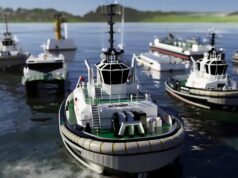


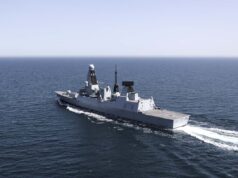

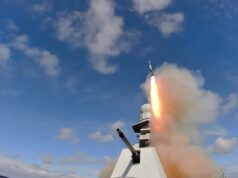
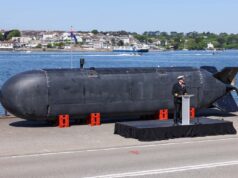
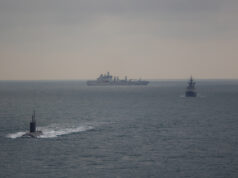
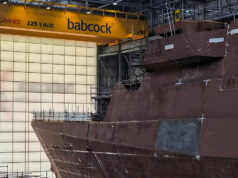

As you can see, the Russian ship quite low in the water, because it’s carrying gold bullion to Mar-a-Lago.
Meanwhile… the US has cancelled its Constellation Class Frigate Program.
It’s a bit telling on how bad fleet numbers are now, when it’s stated that “The Royal Navy always has a ship held at notice to conduct these missions”. Which infers we don’t have enough ships patrolling our waters, that can be tasked to intercept, but instead we have a ship held in readiness in port.
Why do you want a RN vessel constantly at sea around the UK,burning fuel etc?
So I guess patrolling our undersea cables, pipelines etc isn’t worth the effort? There are any number of reasons why to have a ship at sea patrolling around the UK, rather than being tied alongside.
What would you have then a full CSG? There is no need to have a ship out there all the time! It’s quite clear if needs be the ship on standby is perfectly capable of being on station where it’s needed! It can be directed to where it’s needed instead of just cruising for cruising sake causing more stress to hulls and machinery not to mention the crew.
I thought the FRE and TAPS remain available as needed? Not an issue for me, unless I miss something.
IUSS and wider surveillance from other assets should in theory give warning of any vessels and subs that need watching.
I thought the Rivers from the old FPS were the assets at least one of which are always at sea.
I’m not sure the TAPs could be used, as it should be being used to hunt for “foreign” subs that could interfere with or threaten the CASD. Not what the FRE is in this context?
No, my apologies, you’re right on TAPS. I was lumping assets together as to what might be available regardless, not what in reality is likely to be used.
The FRE Fleet Ready Escort, remains in standby to respond to things like this. Or did? I assume things aren’t so bad they’ve gapped that as well.
Use UAVs to achieve 24/7 coverage – use IPVs if we need closer monitoring. Keep all our IPVs in home waters doing fishery protection and border monitoring as well as shadowing foreign vessels in UK waters. – that is what they were built to do – only exceptions, Gibraltar and Cyprus supporet.
Nice to see the word shadowing instead of that macho ++++ in the papers about intercepting